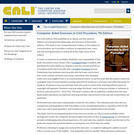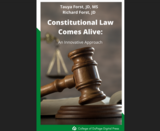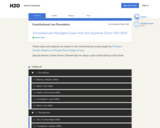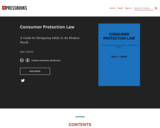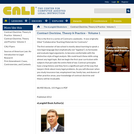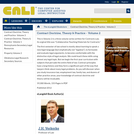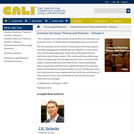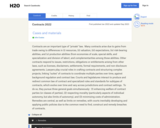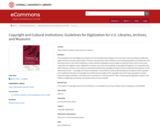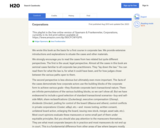We wrote this book as the basis for a first course in corporate law. We provide extensive introductions and explanations to situate the cases and other materials.We strongly encourage you to read the cases from two related but quite different perspectives. The first is the usual, legal perspective. Almost all the cases in this book are seminal cases familiar to all corporate law practitioners. They “lay down the law.” You can read them for what the law is, for what it could have been, and for how judges chose between the various paths open to them.The second perspective is less obvious but ultimately even more important. The facts of the cases demonstrate how corporate actors use the building blocks of the corporate form to achieve various goals—they illustrate corporate law’s transactional nature. There are infinite permutations of the various building blocks, so we can’t show all. But we have endeavored to include a good selection of standard transactional scenarios—buy-and sell-side M&A, share reclassifications (Zuckerberg), executive compensation (Disney), dividends (Sinclair), jostling for control of the board (Blasius and others), control conflicts in private corporations (Coster; eBay), etc.—and moves (voting, written consent, unilateral board action, enlarging the board, issuing new stock, merger, asset sale, etc.). Most court opinions evaluate these maneuvers or some small part of them under equitable principles. But you should also pay attention to the maneuvers themselves. They are what most corporate lawyers do in practice and most maneuvers do not end up in court. This is a fundamental difference from other areas of law where lawyers mostly get involved at the back end, so to speak.A separate reason to pay great attention to the facts is that much of corporate law consists of broad standards that take on real meaning only in their application. Understanding the law often requires reading the full facts. The judges clearly considered these factual details important, even on appeal, and so should you!With one exception, all cases in these materials are Delaware or federal cases. Delaware law is the dominant corporate law of the United States. In the U.S., each state has its own corporate law, and the applicable law is the law of the state of incorporation. Corporations are free to incorporate where they want, in return for paying incorporation tax (“franchise tax”) in that jurisdiction. Delaware has attracted more than half of all public corporations and many private corporations in the U.S. (Delaware derives a third of its state revenue from the franchise tax!) Furthermore, Delaware is also the model followed by many other states. As a result, we see no point in teaching you other states’ law. We occasionally use other countries’ laws to expose you to alternative arrangements; the variance between countries is much larger than between U.S. states.For similar reasons, we teach only corporations proper. We do not cover partnerships, limited liability companies (LLCs), or the many other entity forms now available. These other forms are undoubtedly important in practice. But an introductory course cannot teach the nuanced differences between these forms, many of which lie in tax law. We only give you a brief warning about accidental partnerships in the first class. However, there are substantial commonalities between the various entity forms. If you understand corporate law and the underlying business problems, you will easily learn the other forms when the need arises.GlossaryBylaws = a corporation’s secondary governing document (cf. DGCL 109(b)). The charter can provide, and usually does provide, that the board can amend the bylaws without shareholder consent (DGCL 109(a); contrast the charter itself, which can only be amended by board and shareholders jointly, DGCL 242(b)).Certificate of Incorporation = a corporation’s founding and primary governing document (cf. DGCL 102).Charter = certificate of incorporation.Common stock / share: see share.Debt holders = creditors.DGCL = Delaware General Corporation Law, i.e., the basic Delaware statute. As a guide to this important statute, you might want to consult simplifiedcodes.com.Dividends = an official distribution of cash or other assets to all shareholders of one class. Even though dividends are generally the only way shareholders as a group get a return on their investment (individual shareholders can also sell their shares, but that only puts the buyer of the shares into the seller's shoes), dividends are in the board's discretion (DGCL 170(a)).Equity; equity capital = the excess of assets over liabilities, if any (or equivalently, non-debt financing).Equity holders = shareholders. The term derives from the fact that roughly speaking, equity is available for distribution to shareholders.Limited liability = no liability (of shareholders). The expression “limited” comes from the observation that shareholders stand to lose whatever they put into the corporation, as this is available to satisfy the corporations' creditors' claims. However, shareholders have no liability beyond that, absent pathological circumstances.Merger = the fusion of two corporations into one (cf. DGCL 251).Preferred stock / share = stock with special rights (“preferences”), generally with respect to dividends. A standard term is that preferred shares are entitled to a certain dividend per year, payable if and when a dividend will be paid to common stockholders. In return, preferred shares often do not carry voting rights.Public corporation = a corporation whose stock is publicly traded, usually on a regulated stock exchange such as the New York Stock Exchange.Share = an interest in the corporation with rights that are defined by the corporation’s charter. Unlike debt, shares do not provide a right to fixed payouts. Rather, the board decides if and when shareholders will receive so-called dividends. The default rule is that each share provides one vote (cf. DGCL 212) and equal dividend rights; such shares are called “common shares” or “common stock.”Stock = a synonym or collective term for shares (as in “twenty shares of the corporation’s stock”).
